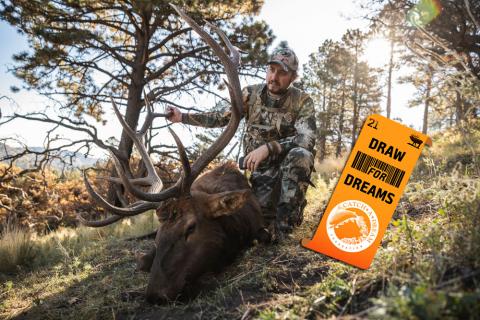Provided by John E. Phillips
With a field of 250 boats, the odds for 33-year-old Brandon Palaniuk of Rathdrum, Idaho, to win the Bassmaster Northern Open on the James River, a tidal river, in mid-May 2021, was a long shot. To come out 50th on Day 1 ensured that Palaniuk, who’s won $1.5 million plus through the years fishing, would get to fish on Day 2. However, he was at the bottom of the pack of the top-50 anglers, after catching only 13 pounds and 11 ounces of bass. I wouldn’t have bet 50 cents on Palaniuk’s chances to win, but greatness never depends on odds. Palaniuk, the 2017 Bassmaster Angler of the Year, pulled off one of the greatest wins ever in Bassmaster history.
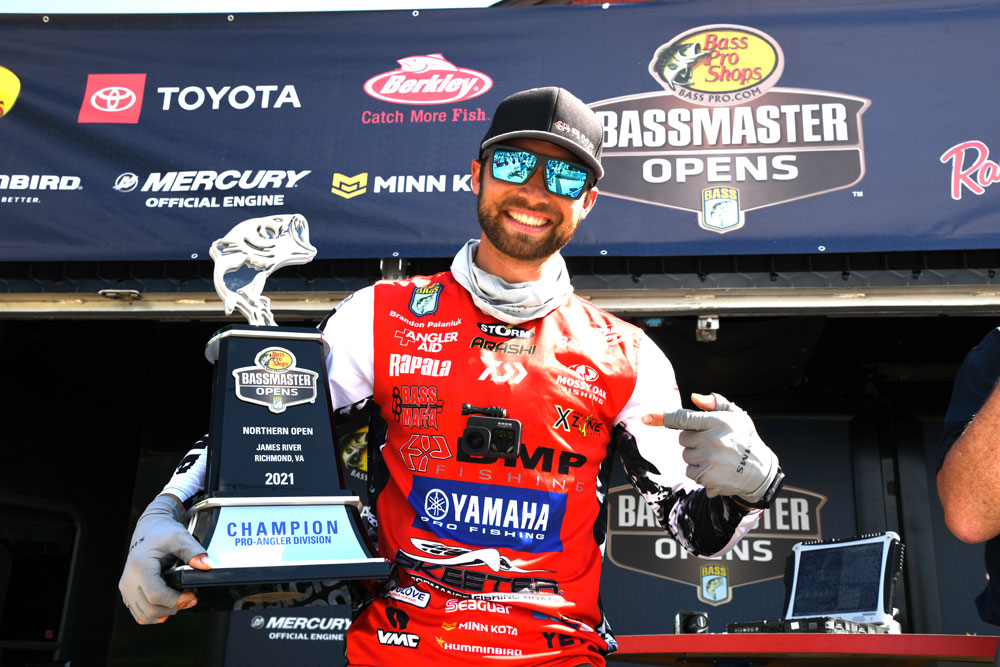
Brandon Palaniuk Fished the Right Bass Baits in the Wrong Places on This Tidal River
The James River where we fished was located in Richmond, Virginia. Since I fished the Bassmaster Elite Series, I had a very limited amount of time to practice before this Open tournament. On Day 1, I was still trying to figure out how to fish this tidal river. I had an okay day, but only finished 50th out of 250 boats. I’d caught some fairly decent bass, but I never had a really big bite.
People said to me after Day 1, “Well, anybody in his right mind would think that if you were in 50th place, the best you could hope for was trying to get any kind of check at the end of the tournament. How in the world do you think you can win?”
My answer was, “This is bass fishing, and a bass-fishing tournament is never over until it’s over. Anything can happen on the water on any given day, especially on a tidal river. Changes can happen on a tidal river daily because of tide coming in and going out. So, you can make some really great moves to move up in the standings, or some really great moves to fall in the standings, depending on how the bass react to the tide, and how much time you have to fish the spots where you’ve found the bass with a favorable tide.
But no day on the water is a bad day if you learn something. On that first day, I learned that numbers of the bass were transitioning from spawning to a postspawn pattern. I got enough clues on that first day to change my approach on Day 2. The number-one concern of postspawn bass is to eat as much as they can to recover from the energy loss and the weight loss they’ve experienced after the spawn. On Day 1, I caught numbers of bass on a drop shot rig, a jerkbait and a swimbait. However, I didn’t catch the bass I needed to move up in the standings.
Brandon Palaniuk Discovers a 5x5 Foot Magic Bassing Spot on Day 2
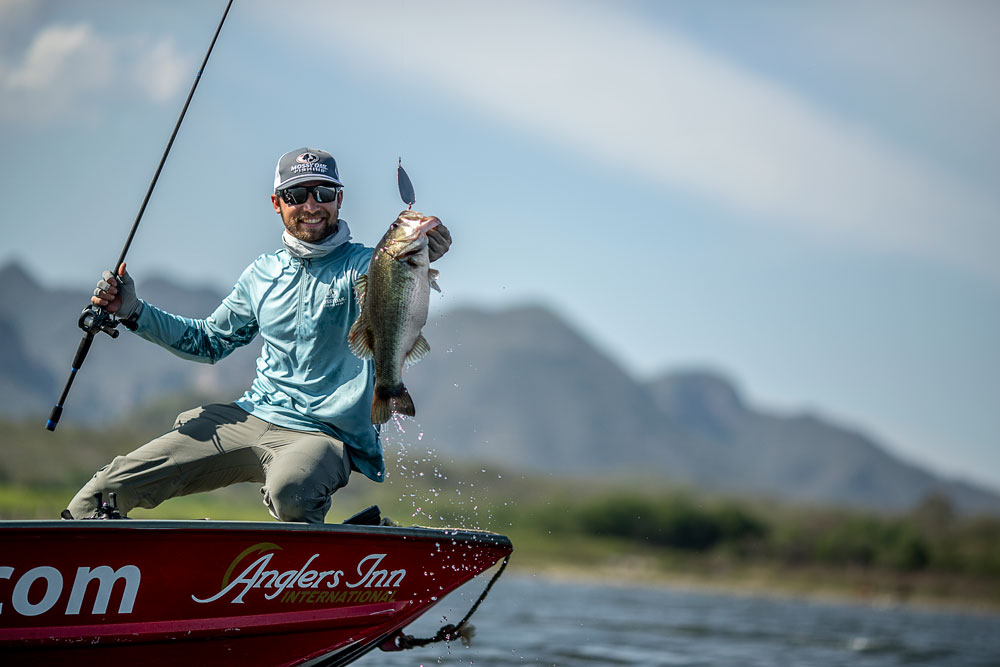
On Day 2, I had learned from Day 1 that the bass seemed to be holding on current seams. They stacked up on the slack-water side of a current seam and then moved out into the current to take the bait. I fished a lot of current seams on Day 2 – each from several different directions. I finally got a bite on one of the current seams I was fishing. I determined I had made the right cast to allow my bait to move down the edge of the current and into the correct spot for the bass to be able to eat the bait. I’d learned that many times when you were fishing current seams, you had to continue to make multiple casts to the same spots to get the bass to bite. You had to be able to swim your bait along the edge of that current seam as naturally as you possibly could to trigger the bass to bite.
I soon learned that the bass were stacked-up like cord wood on that little 5x5 foot spot. When I finally figured out where exactly I needed to land my cast to swim my lures through the strike zone, I started catching fish. But I wasn’t catching the size of bass that I needed to catch to move up in the standings. I increased the size of the swimbait I was using from 6 inches to 8 inches. Although I had established the fact that the bass were holding on this one little place, I needed to catch the bigger bass in this school.
I'd always believed that bigger bass eat bigger baits, especially after the spawn. If they could eat a bigger bait, they didn’t have to expend as much energy as they did chasing little baits, and they could put on more weight quicker and recover from the spawn faster. The bigger swimbait triggered more strikes from bigger bass quicker than the smaller swimbait did. I was throwing the 8-inch Megabass Magdraft swimbait in the albino color. My rod was an Alpha Angler 7-foot 9-inch extra heavy, and I was casting with a Daiwa reel with a 7.3:1 gear ratio with 25-pound test Seaguar InvizX fluorocarbon line.
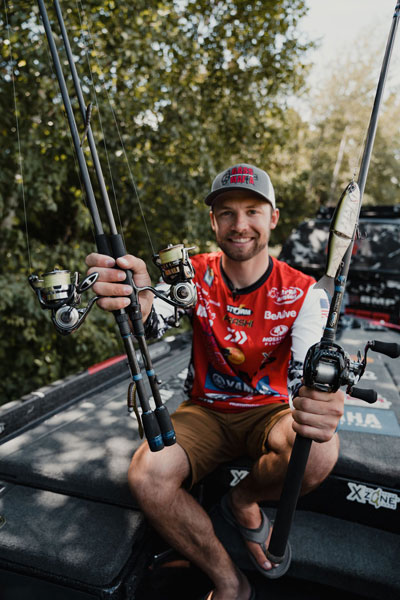 I knew I had to have a big bag of bass if I had any chance to win. I had noticed a lot of big baitfish in the area I was fishing and knew bass coming off the spawn often would eat those bigger baits. I was making short, quick casts – about 30 yards - with that 8-inch swimbait because the strike zone was only about 5-feet long. I knew I only had one hour before I’d have to leave that spot and get back to the weigh-in for the tournament. The bass weren’t taking the swimbait when it hit the water and fell to the bottom. They only would take my lure when I swam it through that 5x5 foot strike zone.
I knew I had to have a big bag of bass if I had any chance to win. I had noticed a lot of big baitfish in the area I was fishing and knew bass coming off the spawn often would eat those bigger baits. I was making short, quick casts – about 30 yards - with that 8-inch swimbait because the strike zone was only about 5-feet long. I knew I only had one hour before I’d have to leave that spot and get back to the weigh-in for the tournament. The bass weren’t taking the swimbait when it hit the water and fell to the bottom. They only would take my lure when I swam it through that 5x5 foot strike zone.
The clue that helped me on that second day in that last hour was recognizing that the baitfish in that area were fairly large. I’m not sure, but I think the bait the bass were feeding on was gizzard shad. After I changed from a 6-inch swimbait to an 8-inch swimbait, the first bass I caught weighed 4 pounds. The next bass I caught weighed 5 pounds and 8 ounces, and the third bass I caught weighed 5 pounds and 11 ounces. I thought all three bass were females. A lot of those bass were fairly skinny, which was another clue that told me these fish probably were some of the first female bass coming off the spawn and had chosen this spot to hold and feed in because this little place was producing the biggest baitfish that were easy for them to catch and eat along that current seam. Once I figured out the combination of cast, lure size and the short retrieve, I thought that even though I only had an hour to fish before I had to leave, I had a really good chance of catching a big bag of bass in a short time.
I’ve learned over the years that when you identify a place like this on a tidal river, you can turn a bad day into a really good day in only 15 minutes of fishing. When you’re fishing tidal rivers, the bass will stack up on certain places at specific times, depending on tidal movement. The secret to winning a bass tournament on a tidal river is being at the right place, at the correct time, with the best lure. This type of bass fishing is what I call a timing event. You can go from being a zero to a hero in 15 minutes or so. For instance on Day 2, I caught most of the bass I weighed-in from 1 - 2 p.m. I knew I had to weigh-in by 3 p.m., so I had about an hour to run back to the weigh-in point. When I got to the check-in at the boat ramp, I had 5 minutes left before I’d be disqualified.
Brandon Palaniuk Takes the James River Bass Tournament Lead from 50th to First Place
Before the weigh-in on the second day, I thought I had about 18 pounds of bass in my live well because during that last hour of fishing I started catching big bass so quickly that, to be honest, I didn’t really have a good idea of the number of pounds of bass I had in my live well. I thought I’d make the cut to fish the last day of competition, but I didn’t believe I had enough bass to take over the lead. When I went to the scales and learned that I had 22 pounds and 6 ounces and had taken over the lead, I couldn’t believe what I had just done. I’d never before come from as far back as 50th position in a bass tournament into the lead in one day. I realized that I’d really caught the bass I needed to catch to move into the lead in that last hour on the second day of fishing.
After being excited about leading in the tournament, doubt began to creep into my mind. I thought that the little spot I’d found had the potential to replenish itself with more big, postspawn bass overnight. But I didn’t know if I would have the right tide hitting that spot at the best time to catch those big bass on the last day. Another fear I had was that another competitor would get to me and catch the bass I needed to win. The entire secret to catching those big fish was actually the time I fished the spot more than it was the size of the lure and the way I presented the bait.
As I studied the time slots for the next day and learned when I would be able to leave the boat ramp, I found out that I had to check in an hour earlier than I had on the day I’d taken the lead. I knew the tide would be hitting that great bassing spot an hour later in my fishing than it had on the second day of the tournament. I’d be losing 2 hours of having the right tide to catch the bass on the spot I planned to fish. I’d seen other contestants in my area, but I didn’t believe any of them had recognized how small the window was for catching the bass on that site, or how many casts I had to make coming through that narrow strike zone. I was really concerned that when I showed up at my hot spot on the last day that there might be another contestant fishing the place I needed to fish. However, I also understood if they weren’t making the exact right cast to that little, narrow strike zone - they wouldn’t get a bite. But I realized that if anglers were somewhere there, the area was too small for two boats to be fishing that same hole.
Brandon Palaniuk Fishes the Magic Last Hour of the James River Bass Tournament
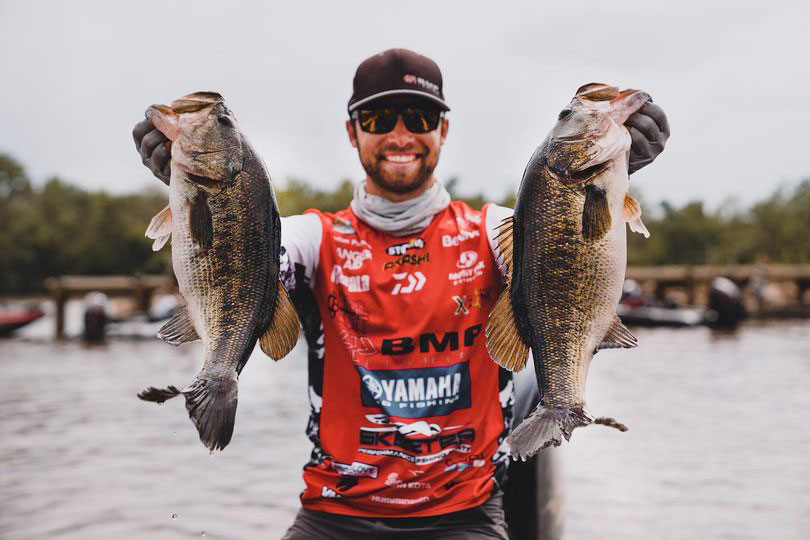
On the last day of competition, I was running down the lake, heading to my magic spot with my fingers crossed, hoping there wouldn’t be another competitor on that spot when I arrived. When I got there, no other competitors’ boats were in sight. To be honest, I was surprised and excited. The first part of the morning went good and bad. I hooked three large bass, and then I lost them. One of the bass I lost would have weighed easily more than 8 pounds. The second bass I lost was in the 5-6 pound class. I couldn’t seem to keep a bass. Finally, I caught one bass that weighed 1-1/4 pounds.
I left that spot and started moving around fishing other places and caught a 3-pounder and finally a bass that weighed about 1 pound. By 11:30, I only had about 5-1/2 pounds of bass in my live well. I knew I had to leave by 1 p.m. to get back to the weigh-in on time. I thought I might have about 30 minutes at the end of the day when the tide changed, and I could be right on my magic spot to catch a good bag of bass. During that last hour, I caught a 5-3/4 pound largemouth, next a 4-pounder and finally two bass weighing 2-3/4 pounds each. In that last hour, I used three different lures - The 8-inch Megabass Magdraft swimbait that had been so productive for me on the second day of the tournament and a 6-inch swimbait and a jerkbait. The bass were biting, and I knew I had to leave, but I didn’t know whether I had enough bass to maintain my lead. However, I felt confident that I had enough pounds to either be second or third. Although I felt I had a really good chance to win, I didn’t know if I could win with the bass in my live well. If someone else caught a great big bag of bass, I would lose. I felt confident I should be either first or second.
What Palaniuk Needed to Win the James River Bass Tournament
When I lined-up for the weigh-in on the last day of the tournament, I was put in last place to weigh-in my fish. I was told I needed at least 14 pounds to win. I was pretty confident that I had more than 14 pounds of bass in my live well. As I went to the scales, I was extremely hopeful, but you never know what your bass will weigh when they’re put on the official scales at the end of the tournament. When my fish were weighed on Saturday, I had 17 pounds, 11 ounces and finished 3-1/2 pounds ahead of second place.
I had fished five times on the James River before this tournament. This was the fourth out of the five times that I’d fished the James River that I was able to fish on the last day and compete for the win. Although I’d had some really close calls and opportunities to win in the past at the James River, I never could seem to get over that final hump. The victory was bittersweet. I knew if I won, I would beat one of my best buddies, Nick Bodsford. Although Nick finished second, he was happy for me.
That morning before we took off for the last day of competition, I told Nick, “If I finish this tournament in second place today, you better be the person who beats me.” We were both happy for each other because Nick had a good event there also. My total weight for the three days of fishing was 53 pounds, 12 ounces. Nick’s total weight for second place was 50 pounds, 5 ounces. Nick had been one of the most consistent competitors in the race to the finish with 16 pounds, 10 ounces on the first day, 16 pounds, 7 ounces on the second day and 17 pounds, 4 ounces on the third day. Nick had caught his bass fishing shallow-water cover with a Lucky Craft 1.5 squarebill and flipping a Texas-rigged Missile Baits D Bomb. Of course I wanted to beat Nick, but I felt badly about taking first place away from him. What many people don’t understand about professional bass fishing is that even though you’re happy when you win, you feel bad when your friends don’t win.
This James River win takes some weight off my shoulders. I’ve now qualified for the Bassmaster Classic for next year, so I have more freedom to fish the rest of the Elite Series without being worried about whether or not I will make the Bassmaster Classic.
When I was asked by a reporter, “How did you figure out the timing on when you needed to be at your magic spot to catch those big bass that you caught?” I explained that knowing when to fish a certain spot on a tidal river is just trial and error. There’s no book or magazine article written that says, “This is what you do at a certain time on a specific area with a particular lure to know where and when postspawn bass will stack up and feed on large lures.” I had to rotate through quite a few tidal seams at different times of the day to pinpoint that one place where those big bass were holding. I learned that during this May tournament I caught the big bass best on an incoming tide. That incoming tide pushed the baitfish higher up in the water column than an outgoing tide did.
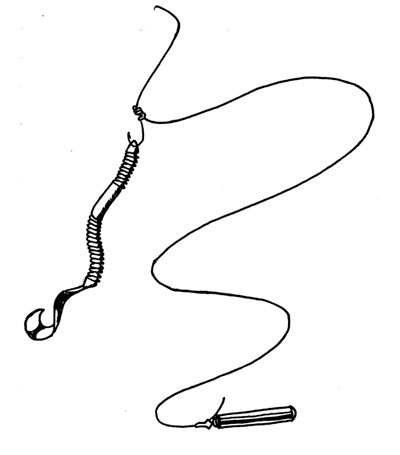 Anytime current or tide is running, the bass are positioned better to feed along those current seams. I think at any given time, there may have been:
Anytime current or tide is running, the bass are positioned better to feed along those current seams. I think at any given time, there may have been:
* 10-12 good-sized bass in that 5x5 foot square of water I was fishing;
* bass moving in and out of that spot, depending on the tide;
* a few big bass showing up, feeding, leaving and then a few more big bass moving into that spot, feeding and leaving.
On the last day of the tournament, I felt like that spot would replenish itself with more big bass.
One thing to learn is that when you’re fishing a tidal river, you can fish a spot and not get a bite, and then return an hour or two later, and that same place may hold good numbers of big bass. The only way to learn lessons like this is by spending time on the water. Sometimes with a low tide, the places you want to fish will be high and dry. But on a high tide, those same areas that were up on the bank may be flooded and holding plenty of bass. To catch bass on a tidal river, you must understand at what time the tide is high enough for the bass to be concentrating on a certain piece of cover where they like to live. In tidal rivers, bass follow the water in on a high tide and out on a low tide. The tide moves the baitfish around too and repositions the bass through the high tides and the low tides.
In this tournament, 70-percent of the bass I caught came on the 8-inch swimbait, 20-percent on the drop shot rig and the rest on a jerkbait. On the drop shot rig, I had a 6-inch X Zone Deception drop shot Worm in either the green pumpkin or the blue-flake colors. I fished that bait on a dead low tide around isolated cover. The other bait I fished was a 5-inch, minnow-shaped jerkbait in the morning-dawn color. At this tournament, I learned that persistence often could be the key to winning a bass tournament.














